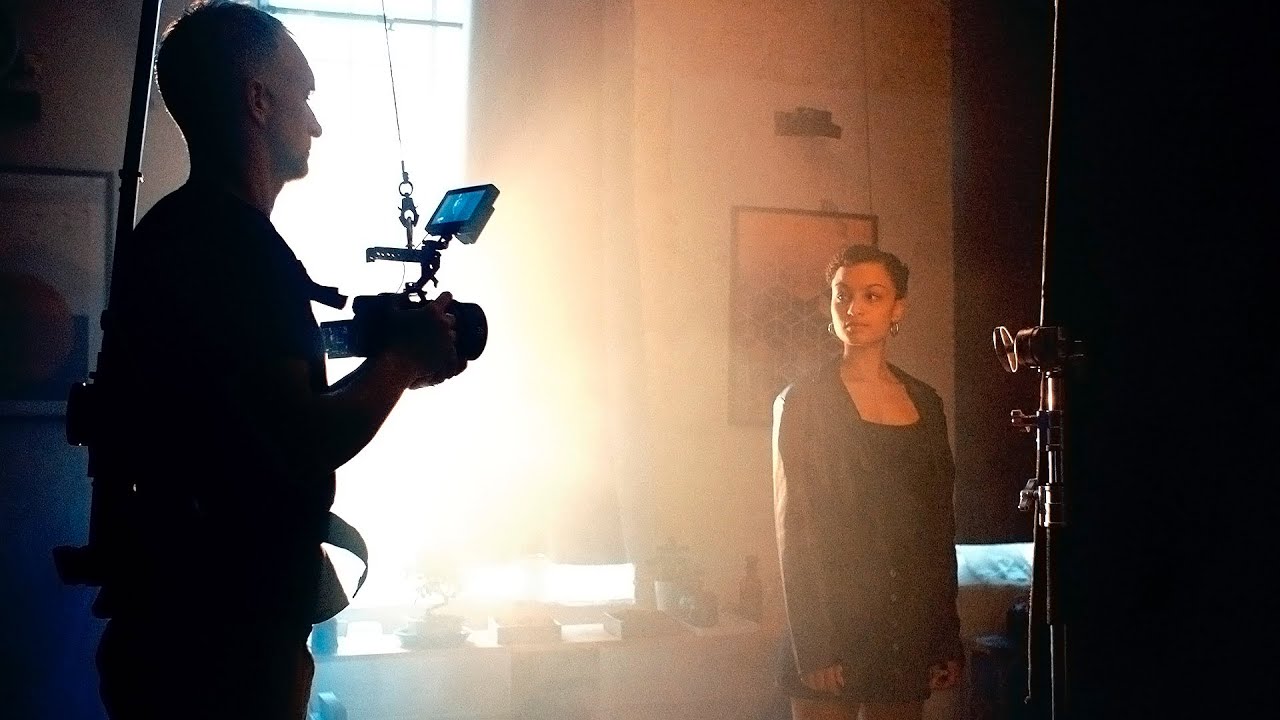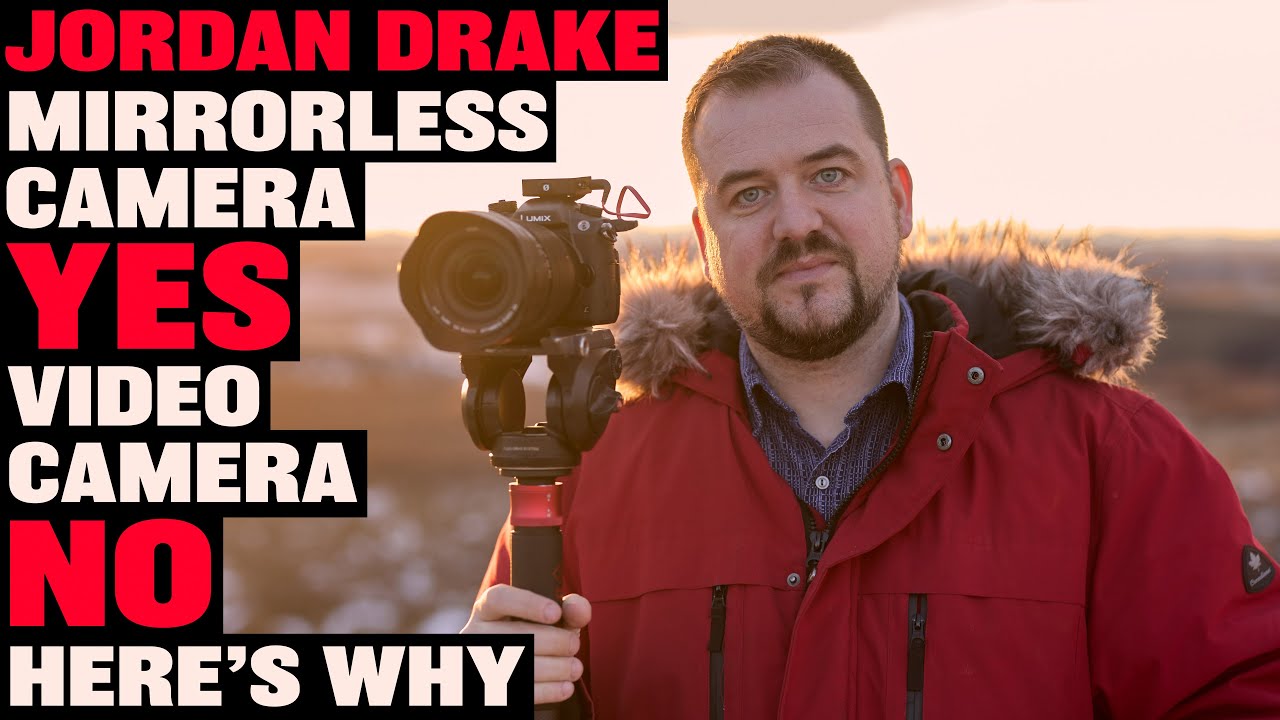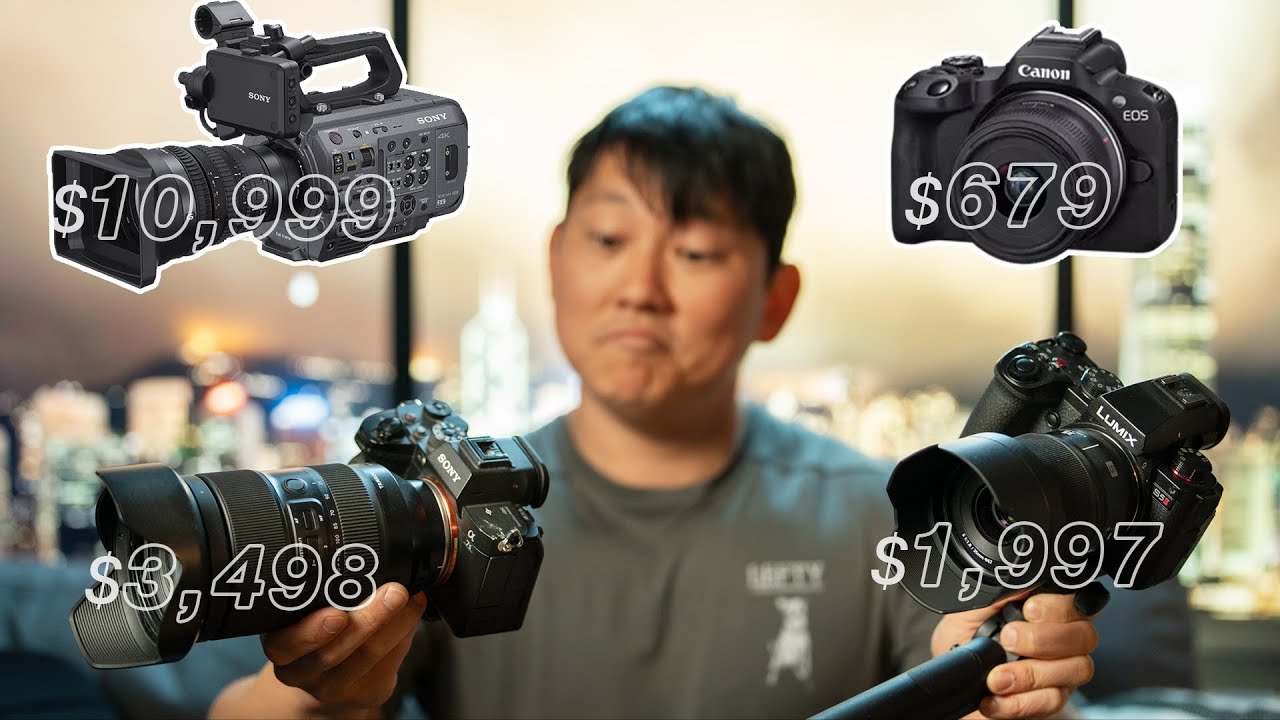the advent of mirrorless cameras has blurred the line of what’s possible in a small form factor.
Companies brand certain models as cinema cameras, which share a great deal in common with other photocentric models within their same line. Specifically, I’m thinking of something like the Sony a7S III (photo line) and the Sony FX3 (cinema line).
So, what really is a cinema camera? Let’s start with the form factor.
Cinema Cameras Are Built to Grow
As solo operators, the gear mantra is often simple: “Lighter is always better.”
Cinema cameras, by contrast, are built to be used within a team setting. On a traditional film production set, you will have a camera operator, but also a 1st AC to pull focus and a 2nd AC as a loader. You’ll have sound being recorded separately and will need a way to tie into the camera for things like time code generation and sync. Your director, producer, and crew will likely want to actually see what’s being captured as well, so you’re also going to need to have various monitoring tools to distribute the image being captured to a video village, director’s monitor, or other displays viewable by the various stakeholders in the production.
In other words, a cinema camera is made to be built up. This is why most cinema cameras are physically bigger as they provide more real estate for ports and various types of connections. Even if a cinema camera is small by nature, like the RED Komodo for example, by the time it is fully rigged up, it’s unlikely to stay that way. Therefore, cinema cameras often feature larger, heavier, and more sturdy bodies in anticipation of the various elements that will connect to it.
Going back to our FX3 versus a7S III example, one of the major differentiators between the cameras is that the FX3 essentially has a built in cage with mounting points for accessories. The a7S III, nominally a photo camera, is designed for solo operator use. So, even though they produce the same image, one is designed to do so in more of a team environment, while the other is not.
Additional Ports
While photocentric cameras might be capable of producing similar imagery to many cinema cameras (with caveats we will discuss in a moment), they are designed for solo operators. Cinema cameras, on the other hand, often live on sets alongside various different departments, all with their own standardized methods of working. So it’s not uncommon that your choice of gear will be driven as much by the needs of other members of your production as it will be driven by your own personal preference.
A simple example would be an SDI port. Most mirrorless cameras send video signals out through an HDMI connection. Depending on the model and manufacturer, this could be a full sized HDMI, a mini HDMI, or a micro HDMI. You may hear videographers grunt and groan about the inclusion of micro HDMI ports in newer cameras and wonder what is such a big deal. But, when you start to build up your own camera rig and have a dozen separate elements all dangling off your camera cage that all need to work perfectly, the rather delicate nature of a micro HDMI connection as opposed to a full sized HDMI connection will become immediately apparent.
But why would you want SDI? Simple, SDI is the established standard on most professional sets. Taking our previous HDMI discussion up a notch, SDI connections come with locking mechanisms to make sure they don’t come loose during a shoot. Perhaps more importantly, on a practical level, many of the professional accessories that will need to connect to your camera will be SDI only. Some may include both HDMI and SDI connections. But many components, like wireless transmitters and many top level monitoring devices, use SDI exclusively.
In addition to SDI, cinema cameras will more than likely offer additional ports you might need on a professional set like full sized XLR connections for sound, dedicated timecode ports required to sync sound as well as multicam footage, or additional ways to power the camera for long shooting days powering multiple components. On a professional set, being able to have your gear flow easily with the other gear required to complete a production adds efficiency and speed for everyone involved !
Multiple Video Formats
The various alphabet soup of video formats used by the production world can be mad making. The number of acronyms seems to grow by the day. And, it’s easy to get a headache just thinking about which clients want to receive which type of footage for each project. It’s not that it’s impossible. It’s just that, because each production will have its established way of working, like camera accessories, you may often find yourself choosing your recording format to fit your production’s needs rather than out of personal preference.
Image Quality
You’ll notice that the first three advantages are based around practicality rather than image quality. In fact, there are many mirrorless cameras today that are more than capable of producing adequate image quality for almost any professional job. This is not to say that there isn’t a difference in image quality as you move up the price scale. But I think it’s fair to say that there’s more image quality today in a mirrorless camera than was present in the early days of digital cinema cameras, yet they still created amazing films and television shows with what they had. So, there’s no reason to be held back by image quality if you find yourself only with a budget for a mirrorless camera as opposed to being able to own a more substantial package. Of course, as you might expect, there are caveats.
Let’s take two examples for the purposes of our discussion. Let’s say you are shooting a music video in a studio. You will have complete control of the lighting and environment and can dial in your lighting ratios and exposure down to the T. In such a situation, you have a great deal more latitude in your choice of tool and, assuming you light properly, you will probably see little difference between footage shot with a top mirrorless camera or a professional cinema camera. The difference might be there. But it’s along the lines of photographers arguing about megapixels. At a certain point, your client isn’t really going to be able to tell the difference. And a skilled cinematographer can make a beautiful video image via lighting and other tools which will overcome some of the spec shortcomings of a less expensive camera.
But, I designed scenario number one in a controlled environment for a reason. Now, let’s look at scenario number two. You are going to be shooting an action sequence outdoors at a beautiful location with rolling hills and open plains. The hills are beautiful, but the shape of them causes bright highlights to reside alongside deep shadows. The clouds are gorgeous, but they are blowing in and out from shot to shot. And your frame is so wide that, while maybe you can control the light on the actors’ faces, you are mostly relying on Mother Nature to provide illumination to the world around them. And Mother Nature can have a mind of her own.
It’s in scenarios like this where you start to see the difference between your gear. When circumstances are less predictable and each minute shot is more expensive, this is where cinema cameras shine. If you were to shoot that outdoor scene, for instance, with even the best mirrorless camera available, you’d quickly notice that it would have nowhere near the dynamic range or color depth of something like an ARRI Alexa. This would be even more obvious when, midway through the scene, those beautiful clouds part and you suddenly find your frame filled with bright sky. The ARRI Alexa is known for its legendary highlight roll-off favored by cinematographers everywhere. To put it simply, the large cinema camera offers the ability to retain more light and color detail from the scene, which offers you more latitude to work in various situations. If you are creating a long-form project with lots of different shooting scenarios that all need to look good, this latitude means a lot.
Why Wouldn’t You Choose A Cinema Camera?
As I mentioned earlier, cinema cameras are largely designed in that manner because they are meant to be used in a team environment. But if you are running and gunning, relying on autofocus rather than manual focus, and your scene/deliverable isn’t likely to reveal the limitations of your camera’s dynamic range, does it really make sense to invest the extra time and money to use a top cinema camera when your mirrorless camera might be capable of doing the same job with less aggravation? It might still be worth the investment. It might not.



